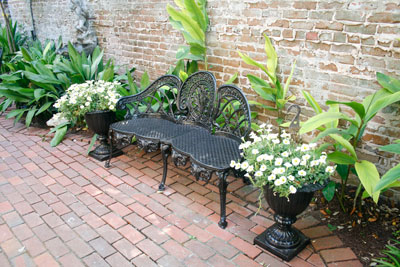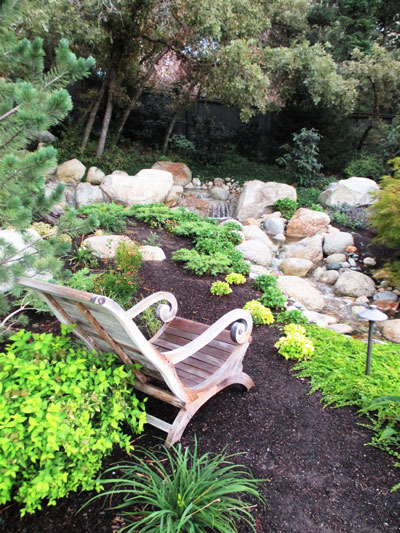Benchmarks
Few things are as alluring as a garden bench. “Forget your chores,” they seem to say. “Come linger a while and immerse yourself in blooms, birds, and other wonders of nature.”

But chairs, chaise lounges, settees, and other types of garden seating offer more than a break from garden tasks. When thoughtfully selected and positioned, garden seating sets moods and builds themes. It catches the eye, creating points of interest. It makes landscapes more livable.

Sitting pretty
Before deciding what to buy, consider your objectives and the size and style of your garden. To create a strong point of interest, select seating based on its style and visual impact. If you relish relaxing in the garden with a good friend or a good book, think chairs with deep cushions, chaise lounges, or other comfortable options.

Color, too, affects selection. White benches brighten sites with dark foliage. Pastel chairs meld with softly-hued flowers. Bright red, yellow, or other bold colors draw the eye. Forest green or black seating makes a style statement all its own.

And don’t forget proportion. A large open expanse accommodates a garden set or a mini-row of matching chairs or chaise lounges. Furnish small, intimate spaces with a one-of-a-kind chair or loveseat.

Finally, consider maintenance. Is the seat constructed of sturdy, long-lasting materials? Will it need to be repainted? Is it likely to require repairs?
Style setters
Garden seating can be as simple as a wood slab suspended across two stumps or as ornate as a cast iron loveseat. Whatever style you select, it should complement your garden and your lifestyle.

— Cast iron furniture offers Victorian heritage and durability. It is especially suited to formal landscapes, but it adds distinction to rose gardens and herb gardens, as well. Furnish an entire garden room with matching cast iron furniture, or draw the eye to the end of a path or a quiet corner with a single settee.

— Wicker-look furniture that is constructed from durable, synthetic materials is an ideal choice for covered patios. Customize the look by adding colorful, weatherproof cushions.

— Teak garden furniture complements traditional gardens with its clean, conventional styling. Its durability adds to its appeal.

— Granite benches offer classic simplicity, a perfect match for formal landscapes. Select flagstone benches for cottage gardens, herb gardens, or other spaces where you desire a cozier look.

— Handcrafted twig and willow furniture adds rustic charm to herb gardens and country porches. One-of-a-kind pieces are available at craft fairs, flea markets, or online.

Despite everything they do—set style, suggest mood, create focal points – perhaps garden benches are most valued for the invitation they extend. So what are you waiting for! Come sit a spell and marvel at nature’s sensations.
